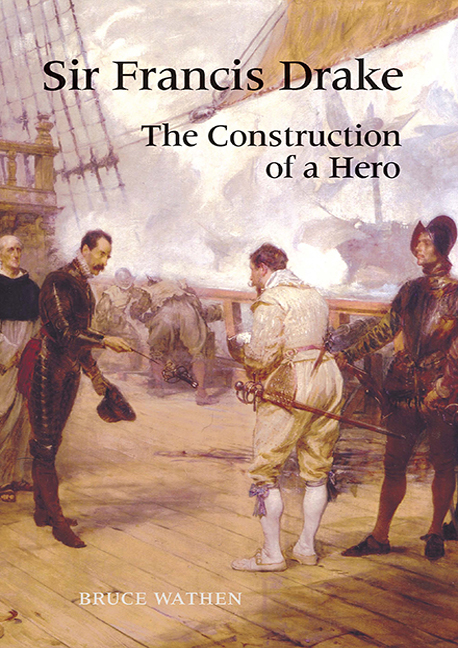Book contents
- Frontmatter
- Contents
- List of Illustrations
- Dedication
- Acknowledgements
- Introduction
- Chapter One Auxilio Divino
- Chapter Two ‘Sir Francis Drake Revived’
- Chapter Three ‘Behold the warrior dwindled to a beau’
- Chapter Four ‘Homage to Britannia’
- Chapter Five ‘Who the New World Bade British Thunders Shake?’
- Chapter Six ‘The Prose Epic of England’
- Chapter Seven ‘Mould him in bronze’
- Chapter Eight ‘Gun to Gun he'll Challenge us’
- Chapter Nine ‘A pirate, and a good one’
- Chapter Ten The Future
- Bibliography
- Index
- Frontmatter
- Contents
- List of Illustrations
- Dedication
- Acknowledgements
- Introduction
- Chapter One Auxilio Divino
- Chapter Two ‘Sir Francis Drake Revived’
- Chapter Three ‘Behold the warrior dwindled to a beau’
- Chapter Four ‘Homage to Britannia’
- Chapter Five ‘Who the New World Bade British Thunders Shake?’
- Chapter Six ‘The Prose Epic of England’
- Chapter Seven ‘Mould him in bronze’
- Chapter Eight ‘Gun to Gun he'll Challenge us’
- Chapter Nine ‘A pirate, and a good one’
- Chapter Ten The Future
- Bibliography
- Index
Summary
In a recent biography of Sir Francis Drake the author noted that, ‘In all more than one hundred original books, fact and fiction, have dealt at full length with Drake's career.’ Perhaps surprisingly, this is probably a conservative estimate. The lives of few historical characters have received more intense investigation than that of Francis Drake. His fantastic sea-faring exploits have long exerted a great fascination and a multi-layered mythology has built up around him. Undoubtedly his reputation owes much to the Victorians who looked to an idealized Elizabethan past when constructing their imperial history. And yet Drake had survived (or had remained vigorously alive) in the popular imagination for almost three hundred years before the nineteenth-century myth-makers began to manipulate his exploits for their own ideologically motivated purposes. For this reason alone he is worthy of our attention. Familiarity with the unfashionable Victorian version of the Elizabethan should not disguise the fact that Drake is a significant historical figure whose afterlife deserves fuller examination.
Drake was not, of course, the only historical figure to be ‘revived’ and reconstructed during the Victorian period.The lives of other Elizabethan seafarers (Froude's ‘forgotten worthies’ including Frobisher, Hawkins and Grenville) received similar attention. Sir Walter Raleigh, to whom Drake is often compared, was another important figure in the nineteenth-century history of Empire. Millais's painting The Boyhood of Raleigh (1870), with its depiction of the young Walter listening captivated by an old sailor's tales of the sea, is perhaps the best-known portrayal. In many ways the cultural construction of Raleigh has paralleled that of Drake. Both have been celebrated as Elizabeth's seadogs impatient to be loosed against Spain; both have been constructed as pioneers of Empire and their stories used to encourage overseas expansion. But Raleigh has sometimes been portrayed as a tragic figure, an imperial visionary whose schemes were thwarted by the need to appease Spain. On the other hand, Drake's robust manliness (and enviable record of success) was rather more suited to the Victorian idea of Englishness, and he had loomed somewhat larger in the popular imagination.
- Type
- Chapter
- Information
- Sir Francis DrakeThe Construction of a Hero, pp. 1 - 11Publisher: Boydell & BrewerPrint publication year: 2009

